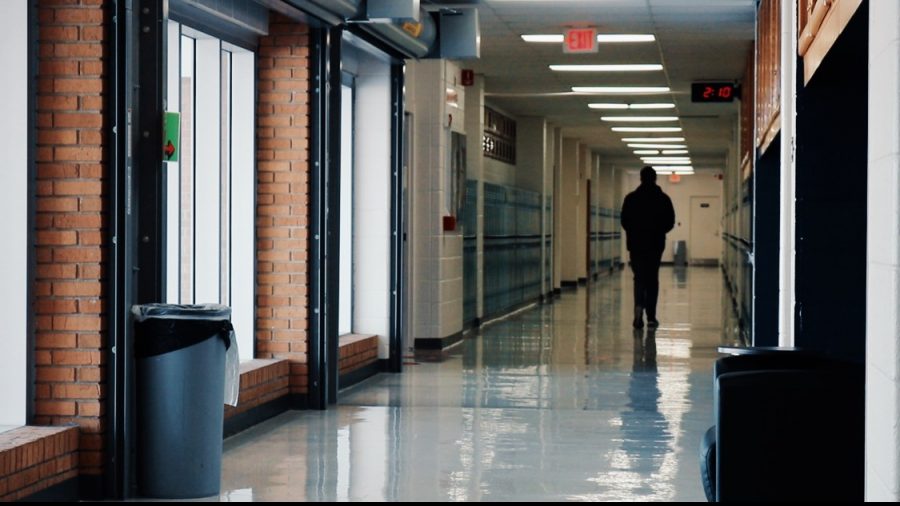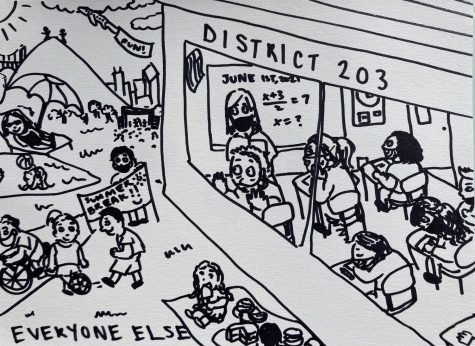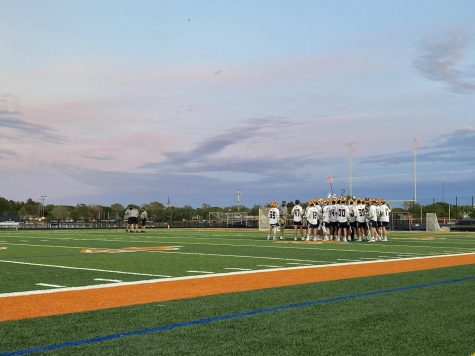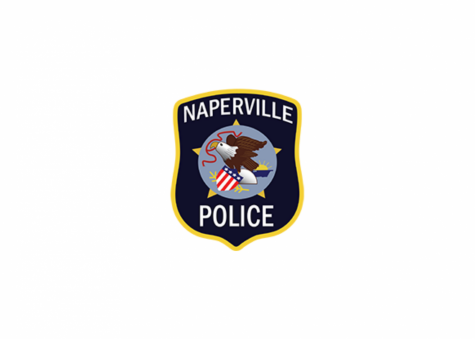Return to North
A running blog of our impressions of the hybrid model.
Photo by Beth Carlson, Caroline Kady
These running updates are established to tell the experiences of students in the hybrid model. Any opinions or experiences represent the ideas of individuals from The North Star and the collective agreement of the staff. This story will be updated at the end of each day for the first week of hybrid learning.
Thurs. Jan. 28 — End of day
From our experiences the last few days, it appears the biggest burden facing staff and students in the coming weeks will be online student accommodation. There is a large disconnect between the two groups, with some students even feeling as if it has unintentionally created an “us vs. them” mentality that seems to thrive in our current day. By no means are the two groups of students aggressively put against each other, but they do have to fight for the teacher’s attention and resources. However, there is no single solution to these problems. It is natural that teachers will want to address the in-person group since they can immediately provide the human connection so many of us have been missing for the last 10 months. It is going to take a lot of creativity from both staff and students to alleviate some of these issues.
One particular issue that came up frequently was the inaccessibility of teachers in the moment. If a screen is not shared or a microphone is muted, it can be difficult for the online student to get the attention of the teacher; messages in the chat and unmuted participation only works if the teacher is paying attention to the screen and has the speaker turned up loud enough. One possible solution that was discussed was appointing a chat monitor — an in-person student can log on to the Zoom call from the classroom (muted and camera off) and alert the teacher if there is a concern among the online students. Now, the issue becomes choosing a student to do this and making sure they are accurately reporting what is happening, but we feel as if students are willing to help out their teachers and peers during this time.
Finally, online students expressed concern about forming relationships with peers and teachers. Some felt that it was easy for them to be spoken over or lost in the crowd while they tried to participate online. especially if that student has never met the teacher or does not have a friend in the class. It is extremely important for teachers to take the same steps they did first semester to try to establish classroom communities, even with the added difficulty of doing so over two separate environments. Many teachers have begun their attempts to do so, but we feel this should be particularly emphasized in the coming weeks to ensure these students are getting the best experience possible out of a difficult situation.
Wed. Jan. 27 — End of day
The second day of hybrid learning brought about notable logistical improvements. As suspected, the lines getting in to the building were not nearly as troublesome due to students having their self-certification stickers and ID cards at the ready. This issue is due to regress tomorrow as the orange day students must go through Tuesday’s growing pains, but the coming weeks are sure to be smooth sailing for getting in to the building.
Now, the biggest obstacle to timeliness appears to be the one-way hallways; many students have continued to express their confusion and frustration with the setup. Two problem hallways of note have arisen: entering the science hallway from the freshman locker hallway near the bus entrance, and one-way u-halls. Teachers have remained lenient towards tardy students, understanding that the unfamiliar hallways can sometimes lead to paths that simply go around in circles. Hopefully by the end of next week, students will get the hang of getting around.
Tues. Jan. 26 — End of day
One day down, an entire semester to go. As the first day of in-person learning comes to a close for blue day students, The North Star remains optimistic about the future of the hybrid model. Though there were some setbacks and struggles throughout the day, these growing pains are to be expected.
At the beginning of the day, the most pressing issue was the check-in and self-certification process. As some students rushed into their first period classes, they were greeted by only a handful of their peers who were seated at the spaced desks. The problem? The line at the athletic door extended well into the parking lot even after the first bell rang. Paired with the confusing maze of one-way hallways, first period classes got off to a late start, causing a bit of uncertainty for the effectiveness of the schedule. However, now that most blue day students have their self-certification stickers, we are optimistic that the coming days will breed a much smoother process for entering the building. We recommend that orange day students try to arrive as close to the allowed 7:20 enter time as possible, as well as consider entering the main entrance to reduce traffic.
Throughout the day, many students began to understand some teacher’s concerns; teaching to students online and in-person can be tumultuous and hard to follow. It is exceptionally difficult to coordinate engagement with both groups of students. The North Star’s online students mentioned they sometimes had hearing issues when teachers turned to address the class, were unable to see the screen or felt as if they were mere secondary observers instead of hands-on students. As teachers become more used to the hybrid format and the brand new technology, these issues could be alleviated. It is important to note that as teachers work through these issues, it is necessary for the students to let them know what is and is not working. Something as simple as sending a chat to let the teacher know that the students are unable to hear or see the shared screen can help in making this process easier.
The biggest point of disagreement between students came when discussing the newly imposed assignment planners. On one side, the planners were seen as an effective and uniform way to have students record their work and budget their time, especially for underclassmen or students who thrive when they have added structure. On the other hand, students, especially upperclassmen, with established methods of organization did not see a true point to utilizing their planners. It is still unclear how much the use of planners will be enforced, but the attempt to help students stay more organized should not be overlooked.
As blue day students prepare for the second half of their schedule, the overall feel was hopeful. Many students enjoyed the structure to their day and the real human interaction with teachers and peers. The coming week is bound to bring about more small holes in the Return-to-Learn plan, but we believe in it’s overall strength and effectiveness, as long as staff and students continue to take all measures necessary to protect themselves and others.
















